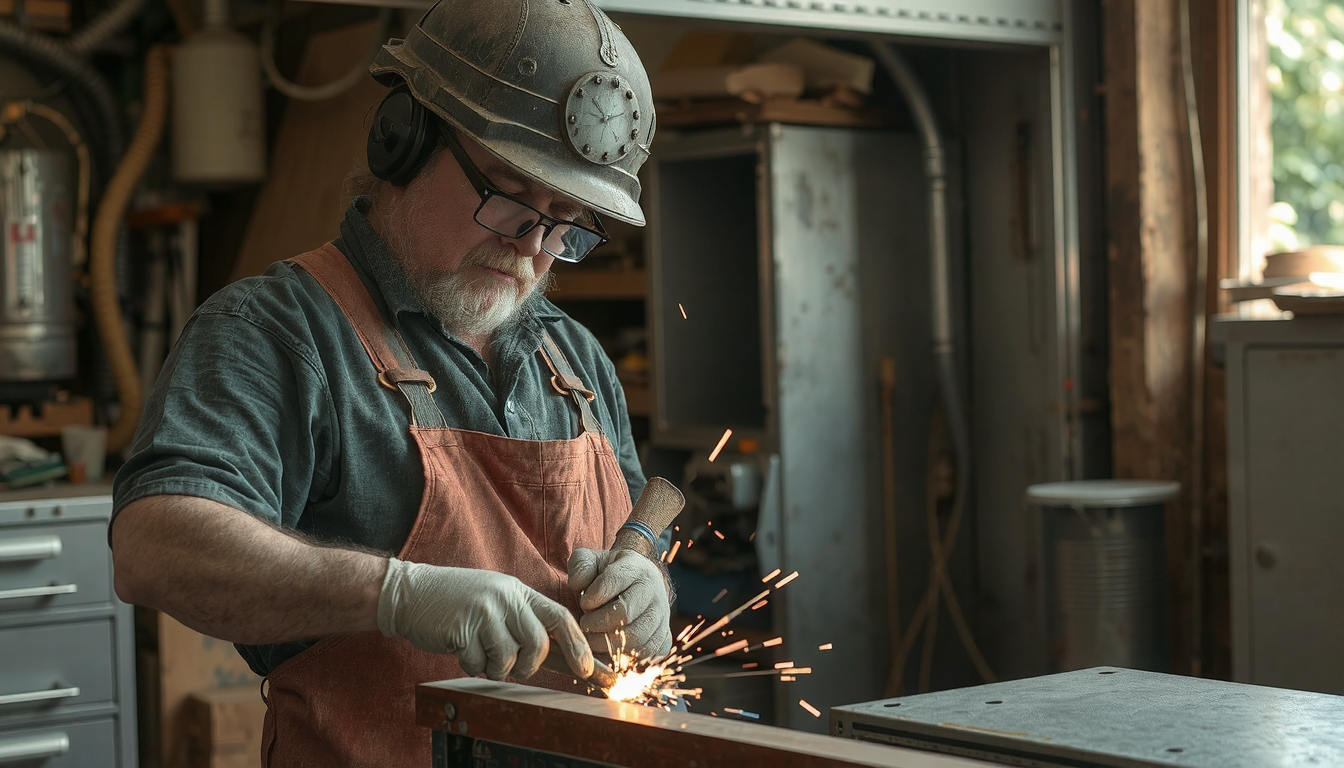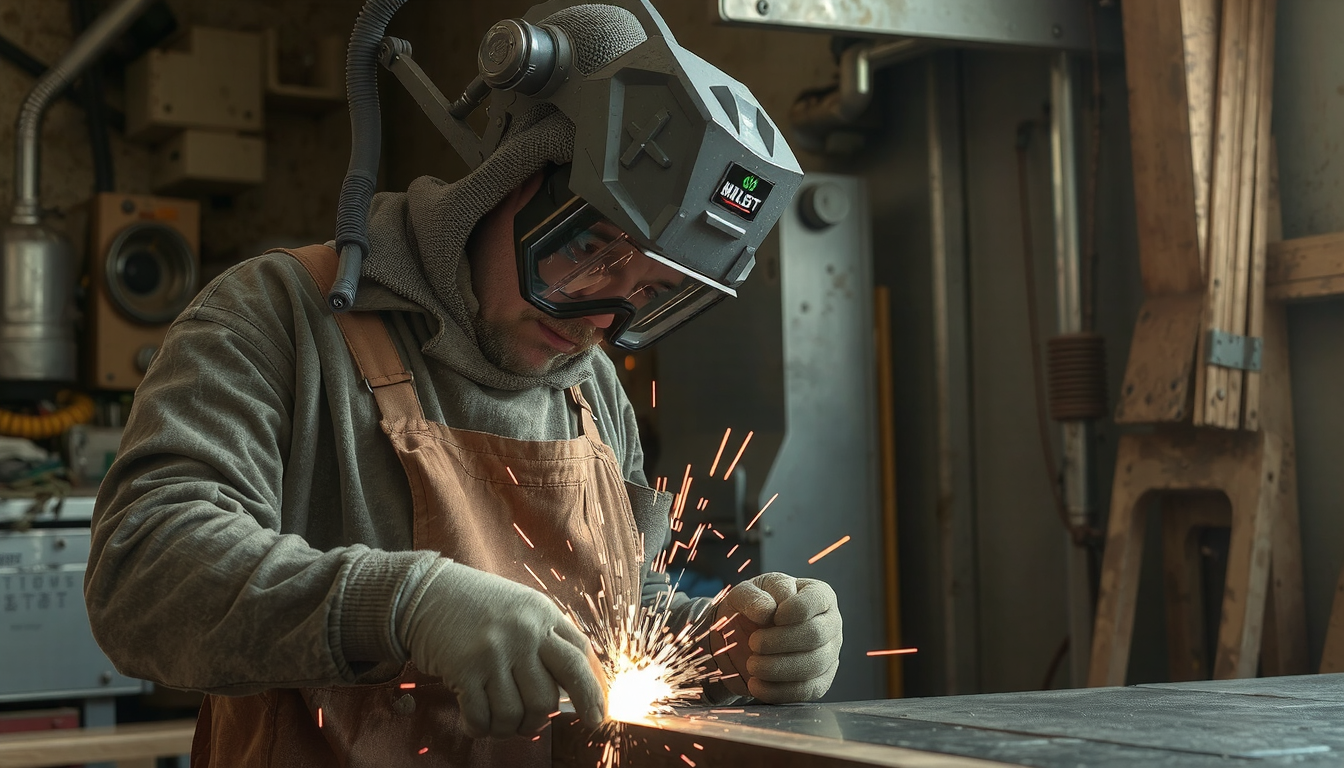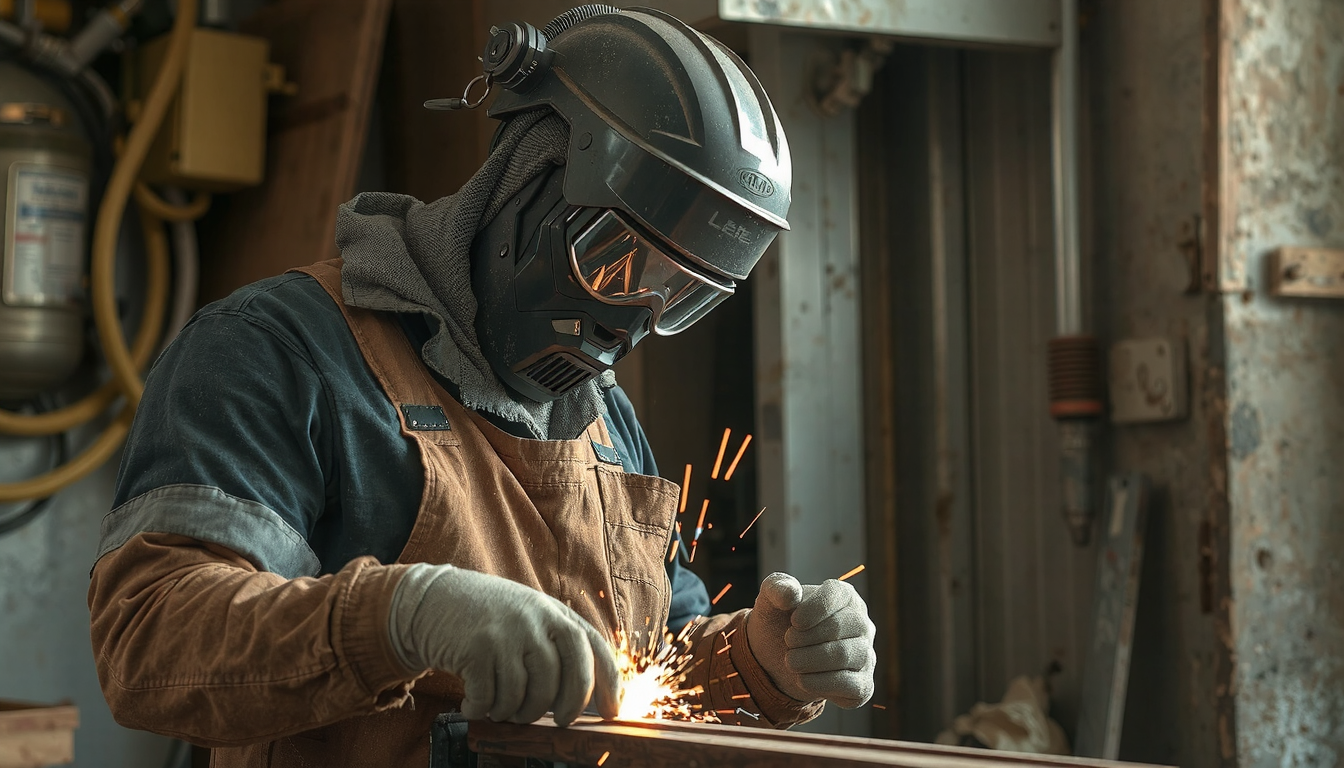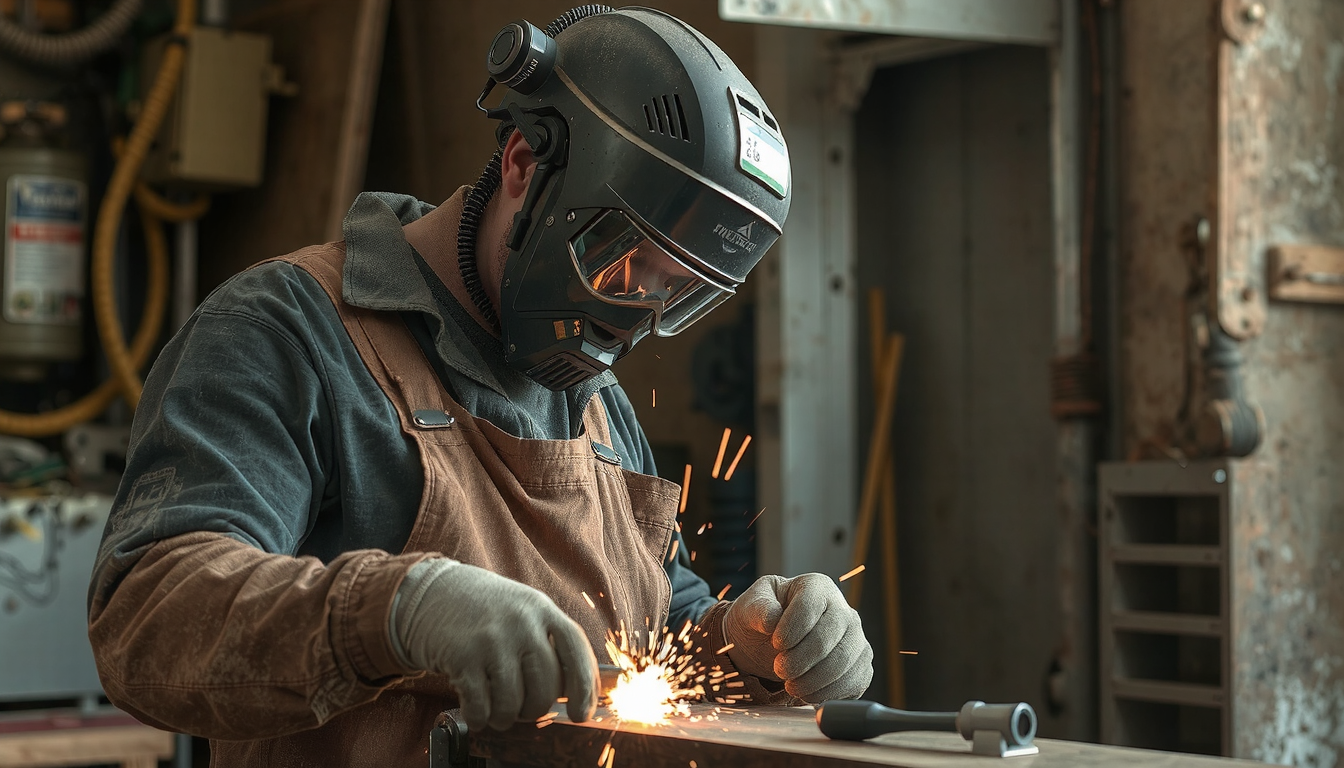Sheet metal workers are artisans and are skilled technical professionals. They are creators and technicians at the same time. Their job description includes making, assembling, installing, and repairing items from thin metal sheets.

The products they create are used in different sectors. Air ducts that heat and cool buildings are made of these metal sheets. The roof and architectural details make metal look like fancy designs. In addition, these workers manufacture the parts used in the car and food industries.
The business has developed through the years. In the past, it was purely manual labor. However, workers today are able to operate advanced computer-controlled machines. This guide will give you an outline of what it takes to become a sheet metal worker. We will talk about the skills you need and the ways to start your own career in this lucrative field.
Major Tasks: Daily Operations
So, what do sheet metal workers do on a daily basis? Their tasks comprise careful planning, making stuff with high-level skills, and on-site fitting & assembly. Each day presents a different challenge that necessitates a clever mind and a steady hand.
The business is about changing two-dimensional metal sheets into three-dimensional objects. The concept of their entire job is to understand the components. A brief look at the key activities that are part of the job that the sheet metal workers do can be found here, which include a dynamic set of tasks.
- Reading Blueprints & Plans: Right after technical drawings are studied, they comprehend what is to be made with certainty.
- Measuring and Cutting: Workers use machines to mark exact lines on metals like steel, aluminum, or copper. Next, they cut the pieces according to the exact measurements.
- Bending and Shaping: Machines such as the press brakes and rollers help them shape the flat metal into the required forms.
- Assembling and Joining: Workers attach the correctly shaped parts. They sometimes weld them, rivet, screw, or use special glues to obtain the final product.
- Installation: They take the finished products to the job site and arrange them according to specifications. This may involve either mounting the ductwork in the ceiling or tacking the panels on the roof.
- Maintenance and Repair: Checking and repairing existing metalworks, such as air systems, becomes part of the job of the sheet metal workers to keep them operating efficiently and to ensure their safety.
- Operating Machinery: They work with everything from simple hand snips to advanced automated machines.
A Glance at their Daily Routines: Workshop to Construction Site
A detailed understanding of what sheet metal workers do entails following through a schedule at a typical day. The job is shared between a workshop’s controlled environment and a busy construction site’s active setting.
The general schedule starts in the morning in the workshop. The team assembles for a quick kick-off meeting to go through the blueprint and plans for the day. Safety is and always has been the first item on the agenda. After the safety briefing, it is time to start making things. You might be the one to set up the computer-controlled plasma cutter. You enter a design from a computer, and the machine cuts the metal with amazing speed and precision. The air is filled with the sound of machines and the scent of freshly cut steel.
After break, the focus may shift. The parts you just made are loaded onto a truck with utmost care. Then it’s time to hit the job site. After getting there, you find where you’ll be working and you chat with the other craftsmen in the area like plumbers and electricians. Team working is what permits their coordination, and thus, everything to fit together correctly.
Installation is carried out in the afternoon. You could be on a lift, hanging huge air ducts on the ceiling of a new office building. The job can prove hard; at times you’re forced to work in cramped centers or at heights. Occasionally, a measurement might slightly be off. However, good sheet metal workers know how to solve such issues on the spot, by making small changes that will result in a perfect fit. The day comes to an end with cleaning the work area and planning for tasks for the next day.
The Scene of Action: Work Settings

Sheet metal workers are employed in many and various locations. Working in different environments is one of the best things about this job. There will always be a job for you, whether you are an indoor or outdoor person. Professionals differentiate between various working settings from the quiet ones and large construction projects.
Fabrication Shops
The majority of workers are at a fabrication shop. This is an organized, inside facility that emphasizes just one thing: part production. Workers at this site are recruited to use large machines to, operation-wise, cut, bend, and assemble metal parts. Companies that engage in производство листового металла supply different projects and parts all over the country.
Construction Sites
Some workers spend most of their time on construction sites. This is a fast-paced and dynamic environment. The closest function is installation. Teaming up with other construction professionals you’ll install systems, roofing metal sheets, gutters, and wall panels. The work is usually outdoors and it can involve heights.
Manufacturing Facilities
Sheet metal workers also play a main role in manufacturing. They may operate in an assembly line where they assist in the manufacture of cars, planes, and kitchen appliances. In these capacities, they make or add the metal parts which constitute the assembly of these bigger products. The work can be exact and tedious.
Finding Your Niche: Significant Specializations
The world of sheet metal is vast. Not each worker does the same thing. Many people choose to specialize in concrete areas of the trade over the years. Knowing the various paths will give you an aid to choosing the kind of sheet metal worker you want to become.
Specialization means that you will need to learn different skills, as well as dedicate your time to certain projects. Below is a table that sorts the most common career paths.
| Специализация | Primary Role | Typical Projects | Key Skills |
|---|---|---|---|
| Fabrication Worker | Creates metal parts and products in a workshop setting. | Custom machine guards, ductwork fittings, equipment housings. | Precision with machinery, ability to read complex blueprints, consistency. |
| Installation Worker | Fits and secures finished metal products at a job site. | HVAC duct systems, metal roofing, architectural siding. | Physical coordination, problem-solving on-site, teamwork, comfort with heights. |
| Maintenance Worker | Examines, cleans, and fixes prevailing sheet metal systems. | System tune-ups, leak repairs, airflow balancing in buildings. | Diagnostic skills, knowledge of system operations, attention to detail. |
| Architectural Worker | Focuses on ornamentation and high-skilled metal installation on buildings. | Copper roofs, decorative facades, custom metal trim, cornices. | Artistic view, fine craftsmanship, patience, dealing with unique materials. |
Modern Tool Kit: Hammers To High Tech
The tools employed by the profession are not just hammers and snips anymore. Even though these hand tools are still important, the contemporary sheet metal worker also applies sophisticated technology. It is a combination of both the old and the new that makes the job more appealing.

Old tools are your fundamental. Workers still utilize hand snips for small cuts, hammers for shaping, and manual brakes for simple bends. The use of these tools requires dexterity and a good ”feel” for the metal.
However, technology has broken the boundaries of what sheet metal workers can achieve.
-
CAD/CAM Software: Most projects originate from the computer. Workers use Computer-Aided Design (CAD) software to create precise 2D and 3D models of parts. This design is then uploaded to Computer-Aided Manufacturing (CAM) software that controls the machines when that part is to be made.
-
CNC Machinery: Computer Numerical Control (CNC) machines do the heavy lifting. CNC laser cutters and plasma cutters slice through metal with incredible accuracy. CNC press brakes can bend metal to the exact angle needed, over and over again. This computer-controlled precision is used in many types of metalworking, including Услуги токарного станка с ЧПУ that create round or cylindrical parts.
The Roadmap for Success: Abilities and Learning
Becoming a capable sheet metal worker does not happen in a day. It is a process that takes time and involves a clearly defined learning path, practical training, and technical expertise. This is a step-by-step roadmap to build a flourishing career in this trade.
The Abilities That You Must Hold
Success in the job depends on a mix of technical knowledge, bodily strength, and personal characteristics. As evident in regular job descriptions, they have high-level skills in:
- Technical Skills: You should have a good knowledge of math especially geometry and fractions. Furthermore, you should learn to read blueprints and have a natural sense of how machines work.
- Physical Skills: The job requires the working of good eye-hand coordination and working with your hands. You should also be strong enough to lift objects and have the endurance to be standing all day.
- Soft Skills: Seeing small details is very important. A small error in measurement can ruin a thick sheet of metal. The skills of communication and problem-solving are also extremely necessary.
The Path to Becoming a Sheet Metal Worker
The trade’s typical route begins with a formal apprenticeship.
- Step 1: Education: The first step to entering the field is having a high school diploma or a GED. Taking classes in math, shop, and drafting can be very helpful.
- Step 2: Apprenticeship: This is the training core. An apprenticeship usually lasts for 4 to 5 years. It combines paid, on-the-job training with regular classroom instruction. You earn while learning from experienced professionals.
- Step 3: Certification: Although not always needed, it would be a good idea to become certified especially in areas like welding to become a more competitive employee.

Career Growth & Prospects
A career in sheet metal guarantees excellent growth prospects. You usually start as an apprentice. After the training, you become a journeyman. You can advance from there to a foreman, supervisor, or even a project manager. Many skilled workers start their businesses after a while.
The future is bright. According to the Bureau of Labor Statistics, sheet metal workers had a median salary of $58,760 annually in May 2022. Linings in the sector show appreciable growth. So a job with fabrication companies would be a good option.
Popular Inquiries (FAQ)
Is sheet metal work a hard job?
The job is physically challenging in most cases. It involves standing for long hours, lifting heavy objects, and climbing stairs or scaffolding. But, machines do a big part of the weightlifting through handling the repetitive work. Safety should be a primary concern to prevent injuries.
What is the time required to qualify as a journeyman sheet metal worker?
It is usually between four to five years of formal apprenticeship training to become a journeyman. This training includes thousands of hours of job site work experience and hundreds of hours of classroom instruction covering both technical and theoretical learning.
Is mathematics necessary to be a sheet metal worker?
Yes, a great skill in math is essential. Sheet metal workers utilize math every day. They utilize geometry and algebra to find exact measurements, angles, and layouts based on what is contained in the blueprints. A worker will hardly be able to cut and form metal without proper math skills.
What differentiates a sheet metal worker from a welder?
A sheet metal worker’s scope is more extensive. It includes the whole process of reading plans, cutting, shaping, and installing. Welding is just one of the many skills a sheet metal worker uses to join pieces together. A welder, on the other hand, specializes only in the process of connecting metal with heat.
Are machines taking over in sheet metal work?
Definitely. Though some of the cutting and bending is repetitive and done by robots, it has only created a new demand for skilled workers who can program, operate, and maintain this advanced equipment. The custom work and on-site installation will always require human skill and problem-solving.

